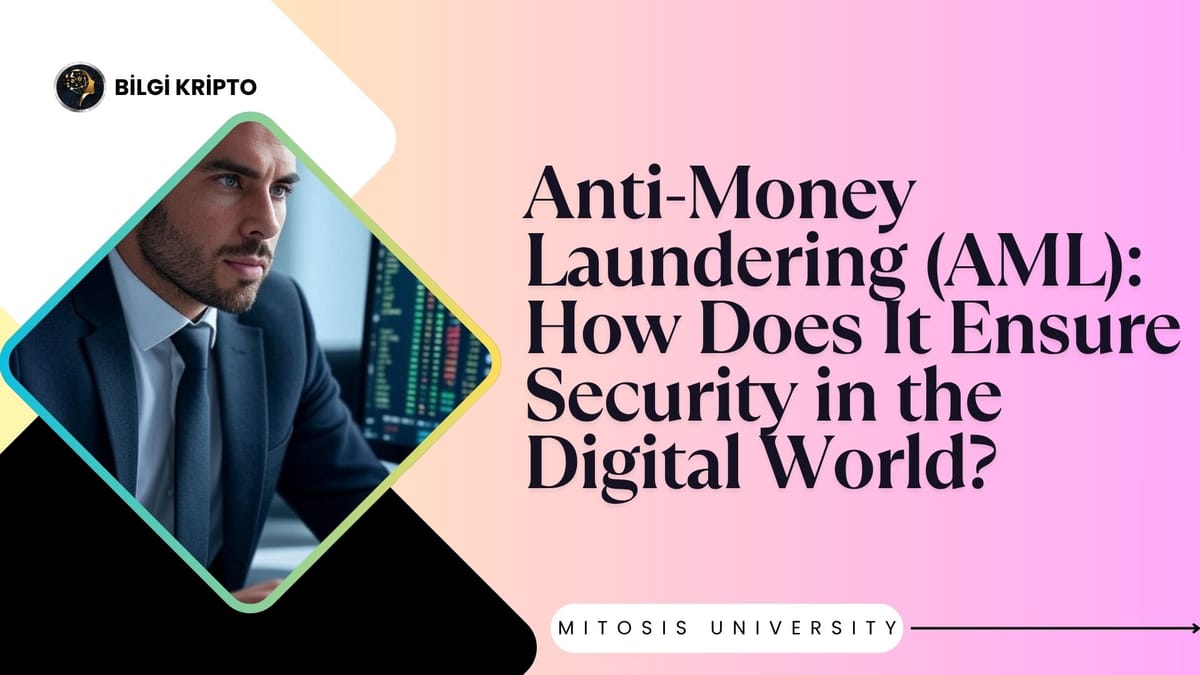Anti-Money Laundering (AML): How Does It Ensure Security in the Digital World?

Money laundering, one of the biggest threats facing the global financial system, has become more complex with the advancement of technology. AML (Anti-Money Laundering) is a legal and technological defense system developed to counter these threats.
What Is Money Laundering?
Money laundering is the process of making illegally obtained funds appear as if they were earned legally. These funds often stem from criminal activities such as drug trafficking, corruption, fraud, and the financing of terrorism. The laundering process typically takes place in three main stages:
1. Placement
Illegally obtained funds are introduced into the financial system. For example, circulating cash through small businesses is part of this stage.
2. Layering
A series of complex transactions are executed to obscure the origin of the funds. This can involve money transfers, crypto asset exchanges, or the use of various financial instruments.
3. Integration
The funds are reintroduced into the economy as if they came from legitimate sources, typically through investments, real estate purchases, or trade activities.
What Is AML (Anti-Money Laundering)?
Anti-Money Laundering refers to the regulations and practices designed to detect, monitor, and prevent funds obtained through illegal means. AML practices apply not only to banks but also to cryptocurrency platforms, payment services, digital wallet providers, and even some fintech companies.
AML systems generally include the following components:
- Risk-based user analysis
- Monitoring of unusual transactions
- Suspicious Activity Reports (SAR)
- Customer verification procedures

What Is the Difference Between KYC and AML?
What Is KYC?
KYC (Know Your Customer) is a process used to verify the identity of users. As a component of AML, KYC is a fundamental step to prevent fake accounts and illicit transactions.
| Category | KYC | AML |
|---|---|---|
| Purpose | User identity verification | Monitoring illegal activities |
| Timing | At account registration | Continuous monitoring |
| Method | ID, address, documents | Detection of suspicious behaviors |
Why Are Cryptocurrencies Critical for AML?
The pseudonymous and decentralized nature of cryptocurrencies creates an attractive environment for malicious actors. Although blockchain technology makes all transactions publicly visible, the inability to clearly identify users is a major concern.
For the following reasons, cryptocurrencies must be closely monitored under AML frameworks:
- Transactions are irreversible
- Peer-to-peer (P2P) transfers are easy
- Anonymous coins (e.g., Monero) are used
- Cross-border transfers can be executed quickly and cheaply

How Do Criminals Launder Their Money?
In addition to traditional methods, digital-era money laundering techniques have evolved:
- Creating fake invoices and receipts
- Using online gambling platforms to cycle funds
- Breaking transaction trails via peer-to-peer transfers
- Converting cryptocurrencies into physical goods
- Moving funds through offshore companies
Tools such as VPNs, mixer services, and privacy-focused wallets make tracking even more difficult.
How Do AML Procedures Work?
AML systems typically combine automated analytics with manual review processes. The key steps include:
- Suspicious transaction detection: Unusually large transfers, sudden changes in account behavior, or transactions to high-risk regions are flagged.
- Review and reporting: Financial institutions investigate these transactions in detail and, if necessary, report them to authorities.
- Restriction and follow-up: Accounts may be frozen, access restricted, and legal proceedings supported.
What Is FATF and Why Is It Important?
The FATF (Financial Action Task Force) is an intergovernmental organization founded in 1989 by G7 countries to set global AML policies. More than 200 countries have committed to implementing its standards.
FATF’s responsibilities include:
- Ensuring AML compliance among countries
- Identifying systems that enable money laundering
- Blacklisting high-risk regions
- Publishing policy recommendations and guidance
Benefits of AML for the Crypto Ecosystem
AML measures play a critical role in legal compliance and user safety. They are essential for making the cryptocurrency market transparent, sustainable, and legitimate. Furthermore:
- Preventing proceeds of crime
- Protecting user funds
- Maintaining financial stability
- Avoiding legal conflicts
Compliance with AML standards is also crucial for the long-term credibility of crypto projects.
Conclusion: The Key to Digital Security
As criminals adopt more sophisticated methods, AML systems must continue to evolve. With the growing adoption of crypto assets, AML practices are becoming increasingly vital. For users to transact safely, transparency, supervision, and technology-driven safeguards must work together



Comments ()